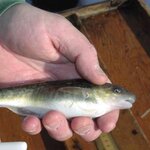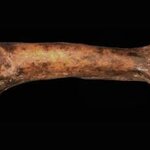Evolution

While my late Professor Dr Neumann was showing me a museum on the outskirt of a German town , the instruments to fight each other were swords . He commented " The most significant progress makind has made is to develop instruments of mass destruction. Nuclear bombs present on the surface of the earth can destroy the entire earth several times. The peaceful use of nuclear energy has been proposed by several nations. However if the most advanced nation of the world find it difficult with all their knowledge, technology and will power to contain the nuclear disasters what will happen if such…

We are developing past the merely human stage. We couldn’t stop it if we all really wanted to. Techno-future will be.
The transhumanism crowd has understood what evolution is all about while many other intellectuals still grapple with getting their head around mere old biological evolution. Evolution is true by tautology: Whatever there will be (successful, more numerous, …) in the future, will be there (successful, more numerous, …) in the future. This is the basis of what some call ‘algorithmic evolution’.
Evolution has absolutely no clue about the difference humans like to uphold between…

While any individual action in a zero-tolerance culture will be evidence of endemic racism, the plain fact is actual racism is below any level in history and dropping fast. That makes it possible to again discuss variations in skin color to provide one of the best examples of evolution by natural selection acting on the human body.Scientists have understood for years that evolutionary selection of skin pigmentation was caused by the sun. As human ancestors gradually lost their pelts to allow evaporative cooling through sweating, their naked skin was directly exposed to sunlight. In the…

Regulatory DNA changes have made a huge impact on the evolution of human-specific traits. A study in the latest issue of Nature covers not just the usual stuff, like what has been added in evolution to make us distinctly 'human', but rather what was lost.
We're obviously different from animals and the researchers set out to find some molecular occurrences that are present in chimpanzees and other mammals but not in people - they found 583, which they call hCONDELs, 510 which were validated, mostly in nonfunctional DNA. One instance sure to catch attention is deletion of a penile…

Evolution has no moral compass. We all know that. And it has no guiding hand. For that reason, says Christian de Duve, professor emeritus at the Catholic University of Louvain and Nobel laureate (Medicine or Physiology 1974), we may be doomed.
And to get his point across to all sides, he uses an Original Sin metaphor.
New Scientist writer Clint Witchalls interviewed de Duve about his new book with Neil Patterson, Genetics of Original Sin: The Impact of Natural Selection on the Future of Humanity.
Some of it is a little touchy-feely, lamenting exhaustion of…

A study just published in the journal Nature by researchers in France, Portugal and Spain looks for the first time at the effects of climate change on the tree of life (that aggregates species according to their evolution/genetic similarity) to find that the whole of it will be affected.
But this is not all bad news because even if the tree is to become “thinner” it keeps its structure as there will be no major losses of biodiversity contrary to what other studies had suggested (this would occur if localized “branches” were totally eliminated).
It still can be a “poisoned present” though if…

Researchers have discovered a genetic variant that allows a fish in the Hudson River to live in waters heavily polluted by polychlorinated biphenyls - PCBs. In their report, they show that a population of Hudson River fish apparently evolved rapidly in response to the toxic chemicals, which were first introduced in 1929, and were banned fifty years later. PCBs were once used in hundreds of industrial and commercial applications, especially as electrical insulators. General Electric released approximately 1.3 million pounds of PCBs into the Hudson River from 1947 to 1976. The…

Arches in human feet have been instrumental in our ability to walk upright and researchers at the University of Missouri and Arizona State University say they have found proof that arches existed in a predecessor to the human species, Australopithecus afarensis, that lived more than 3 million years ago. Carol Ward, an MU researcher in the Department of Pathology and Anatomical Sciences at the MU School of Medicine, and William Kimbel and Donald Johanson, director and founding director of the Institute of Human Origins at Arizona State University, studied a 3.2 million-year-old…

Recently I've had the bug to go and research human evolution. Kinda
cool I know, but slightly off topic for my normal blog. Still, the urge
is strong, and I found myself spending hours on the net looking up
resources and papers. I think the local library is about to cut me off,
but besides that, its been fun and oddly thrilling. That which holds my
attention the most are our cousin species H. Neanderthal and H.
Denisovan.
Let's cover things I already know...
First,
Our current human species, H. Sapien (modern humans) is the first human
species to not have a living cousin species. This was…

Can complex traits lost during evolution recur later? It was an academic argument but now it has some more data. Writing in Evolution, a study analyzes Gastrotheca guentheri , a tree frog with teeth in its lower jaw, separating if from every other frog.
"I combined data from fossils and DNA sequences with new statistical methods and showed that frogs lost their teeth on the lower jaw more than 230 million years ago, but that they re-appeared in G. guentheri within the past 20 million years," Dr. John Wiens of Stony Brook University told the BBC.
But Dollo's law stated…